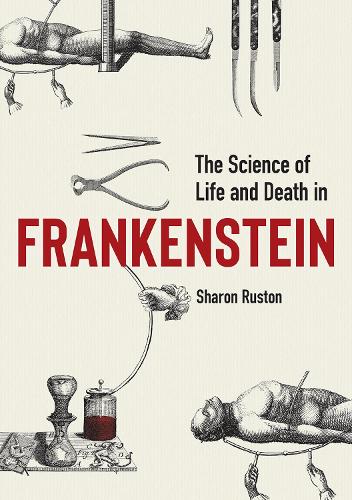
Science of Life and Death in Frankenstein, The
(Hardback)
Publishing Details
Science of Life and Death in Frankenstein, The
By (Author) Sharon Ruston
Bodleian Library
Bodleian Library
1st February 2022
United Kingdom
Classifications
General
Non Fiction
Literary studies: fiction, novelists and prose writers
Classic science fiction
Social and cultural history
823.7
Physical Properties
Hardback
240
Width 156mm, Height 234mm
532g
Description
What is life This was a question of particular concern for Mary Shelley and her contemporaries. But how did she, and her fellow Romantic writers, incorporate this debate into their work, and how much were they influenced by contemporary science, medicine and personal loss
This book is the first to compile the many attempts in science and medicine to account for life and death in Mary Shelleys time. It considers what her contemporaries thought of air, blood, sunlight, electricity and other elements believed to be most essential for living. Mary Shelleys (and her circles) knowledge of science and medicine is carefully examined, alongside the work of key scientific and medical thinkers, including John Abernethy, James Curry, Humphry Davy, John Hunter, William Lawrence and Joseph Priestley. Frankenstein demonstrates what Mary Shelley knew of the advice given by medical practitioners for the recovery of persons drowned, hanged or strangled and explores the contemporary scientific basis behind Victor Frankensteins idea that life and death were merely ideal bounds he could transgress in the making of the Creature.
Interweaving images of the manuscript, portraits, medical instruments and contemporary diagrams into her narrative, Sharon Ruston shows how this extraordinary tale is steeped in historical scientific and medical thought exploring the fascinating boundary between life and death.
'A beautifully cool and elegant survey of the contemporary science and medicine which young Mary Shelley wove so ingeniously into the dark gothic texture of her 1818 masterpiece. With quiet authority and wit, Sharon Ruston calmly assesses the wilder theories, the furious debates, the utopian hopes and the eye-watering experiments, which secretly shaped Frankenstein. Paradoxically, Rustons scholarship gives the Creature a whole new life beyond fiction.' Richard Holmes
Reviews
"But as Sharon Ruston's brief and lively new book, The Science of Life and Death in 'Frankenstein, ' makes vividly clear, the novel is thoroughly informed by, and a serious contribution to, early 19th- century debates about what it means for a clump of matter to be 'alive.'"-- "American Scientist"
Author Bio
Sharon Ruston is Chair in Romanticism in the English Literature and Creative Writing Department at Lancaster University.
